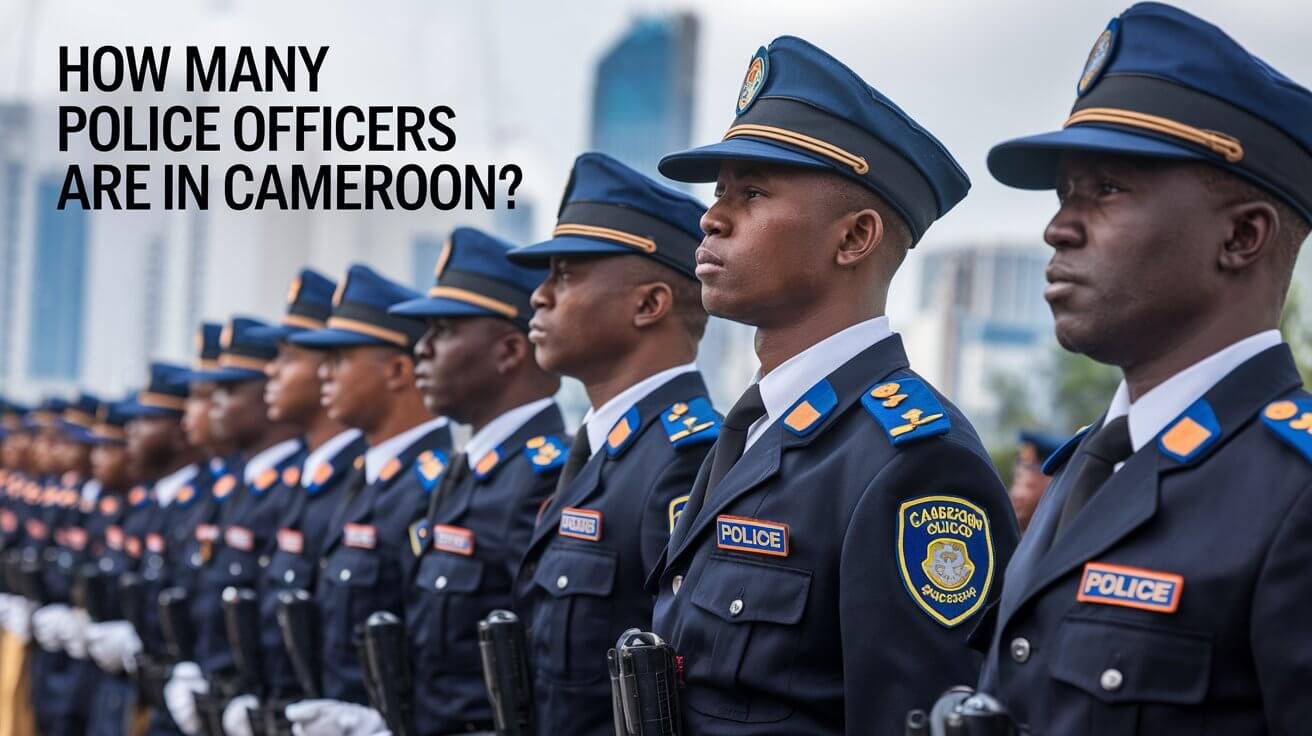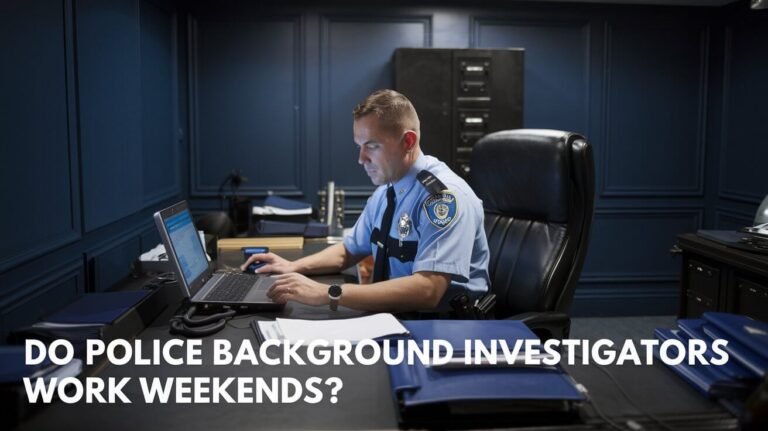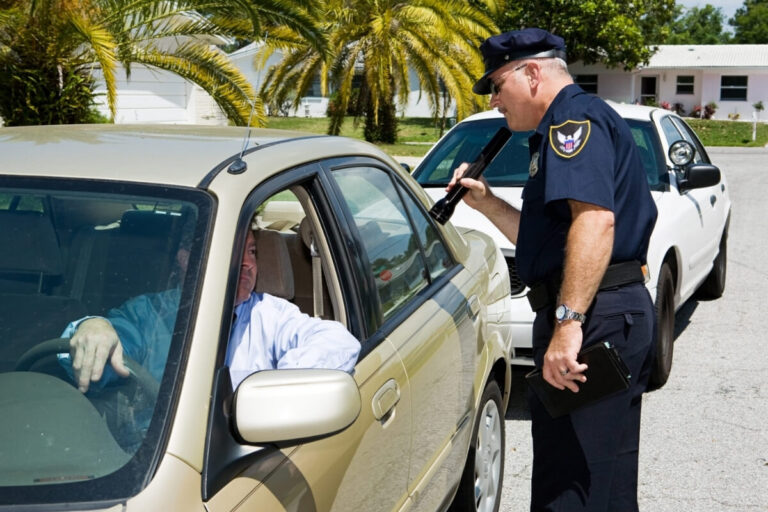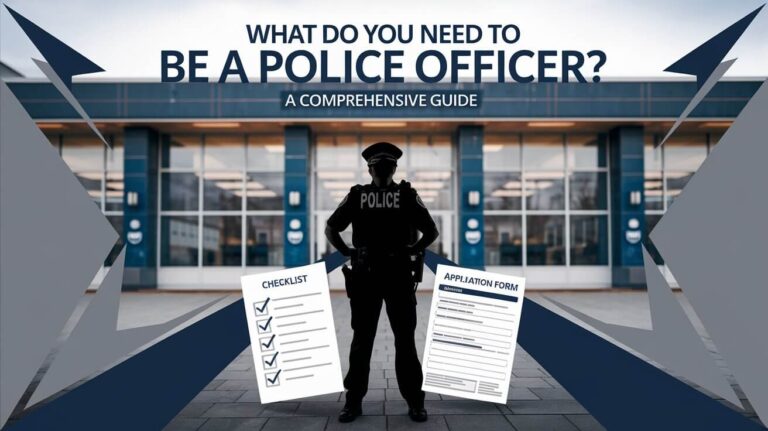How Many Police Officer Cameroon: Numbers and Stats Overview

The law enforcement system in Cameroon includes the Cameroon National Police and the Gendarmerie Nationale, established in 1928. With 9,000 employees, the police ensure the safety and security of the people. Knowing the number of police officers in Cameroon helps us understand their role and challenges.
In Cameroon, police officers keep the peace and order. The General Delegation for National Security is the official name of the national police. They aim to improve their services, focusing on public order and fighting crime.
Current Police Force Statistics in Cameroon
Cameroon’s police force statistics are key to understanding its law enforcement. The government faces challenges like overcrowded prisons and poor detention conditions. The prison can hold 19,415 people but had 32,003 inmates in June 2022.
The police in Cameroon are vital for public safety. They have about 9,000 active officers, as of 2016. The number of officers per person is important for public safety.
Total Active Officers
The number of active officers in Cameroon’s police is a key indicator. With over 25 million people, the ratio of officers to people is about 1:2,778. This is lower than many other countries.
Officer-to-Population Ratio
The officer-to-population ratio in Cameroon is critical for public safety. The current ratio suggests the police might be understaffed. This could mean less policing and higher crime rates.
Distribution by Rank
The ranks within the police force are important to understand. The Cameroon National Police has ranks like inspectors, superintendents, and commissioners. Here’s how many officers are in each rank:
| Rank | Number of Officers |
|---|---|
| Inspectors | 3,000 |
| Superintendents | 2,000 |
| Commissioners | 1,000 |
| Other ranks | 3,000 |
Cameroon’s police force statistics offer insights into its law enforcement. These statistics help evaluate the police’s performance and identify areas for improvement.
Police Force Structure and Organization
The police force in Cameroon is organized in a clear hierarchy. Each rank has specific duties. Knowing this structure helps us see how well it keeps the peace.
The police in Cameroon have a long history. It started with the German Colonial Constitution of 1886-1888. This led to the Polizeitruppe, the first police force in German Kamerun. Over time, the force grew, with the West Cameroon Police Force (WCPF) being a key part. It was formed by ex-servicemen, soldiers, and police from Nigeria.
Some key parts of the police force in Cameroon include: * A clear hierarchy with a Commissioner of Police at the top * A focus on keeping both internal and external security safe * Working together with other agencies like the Gendarmerie and Federal Security * A main focus on policing West Cameroon from 1961 to 1972 * Police training colleges, like the Mutengene Police Training College (MPTC), to train officers
Structure of the police force in Cameroon is vital for the country’s law enforcement. Knowing its history and how it works helps us see if it’s effective in keeping the peace.
| Police Force | Year Established | Responsibilities |
|---|---|---|
| Polizeitruppe | 1886-1888 | Maintaining law and order in German Kamerun |
| West Cameroon Police Force (WCPF) | 1961 | Policing West Cameroon |
| French-styled Gendarmerie | 1961 | Maintaining internal and external security |
Regional Distribution of Police Personnel
The way police are spread out in Cameroon is key to keeping the country safe. With ten semi-autonomous regions, each gets the police it needs. This ensures law and order is kept everywhere, from cities to countryside.
Police numbers are based on how many people live in each area and how safe it is. Cities like Yaoundé and Douala have more police because they’re busier and have more crime. In the countryside, police are spread out to connect with communities and help them.
Here’s how police are divided across Cameroon:
- Urban areas: 60% of police are in cities, keeping things orderly and ready for emergencies.
- Rural areas: 30% of police are in the countryside, focusing on community work and outreach.
- Special areas: 10% of police are in special zones, like the Far North, for counter-terrorism and border security.
This setup makes sure every part of Cameroon is well-protected. By matching police numbers to each region’s needs, the government aims to keep everyone safe and secure.
| Region | Population | Police Personnel |
|---|---|---|
| Far North | 3.5 million | 5,000 |
| North | 2.5 million | 3,500 |
| Adamawa | 1.5 million | 2,000 |
| Centre | 4.5 million | 6,000 |
| East | 1.5 million | 2,500 |
Police Recruitment and Training Systems
Police recruitment and training in Cameroon are key to keeping the peace. The recruitment process aims to bring in diverse candidates. This mirrors the community’s racial, ethnic, gender, and generational makeup.
Training programs are vital to prepare officers for their duties. Yet, issues like low pay and negative views can hinder recruitment. Agencies must find ways to attract and keep good officers.
Improving police recruitment and training in Cameroon is possible. Here are some strategies:
- Identify top performers to create an “ideal candidate” profile
- Show what makes the agency special to attract candidates
- Set up Recruiting and Hiring Units (RHUs) for proactive recruitment
- Regularly check hiring practices, including what’s needed and what’s not
Using these strategies, Cameroon’s police can improve. This will lead to better retention, community relations, and service.
| Country | Participation in Workshop | Support |
|---|---|---|
| Cameroon | Yes | UNICEF country office and Save the Children |
| Burundi | Yes | UNICEF country office and Save the Children |
| Central African Republic | Yes | UNICEF country office and Save the Children |
Specialized Police Units and Their Numbers
Cameroon’s law enforcement system has many specialized police units. They are key to keeping the country safe and orderly. These units tackle big security issues like terrorism and organized crime.
The Gendarmerie is a big part of Cameroon’s security. It has about 9,000 soldiers as of 2016. It’s split into several groups, like the 05 Gendarmerie Regions and 11 Legions. Together, they keep the country safe.
Key Specialized Police Units
- Anti-Terror Units: These units fight terrorism and protect citizens.
- Traffic Police Division: This group focuses on road safety and traffic rules in Cameroon.
- Criminal Investigation Department: They investigate crimes and catch the bad guys.
In Cameroon, law enforcement teams work together to keep everyone safe. The country’s specialized police units are well-organized. They are key in solving security problems. Cameroon is serious about keeping its people safe.
Budget Allocation and Resource Distribution
The Cameroon police struggle with budget and resource issues. They don’t have enough to do their job well. The budget process is key to giving them what they need to keep the peace.
Important areas need more money and resources, such as:
- Training and equipment for police officers
- Building better police stations and getting more vehicles
- Reaching out to the community
More money and resources are vital for the Cameroon police. They help fight security threats like Boko Haram. With better funding, the police can keep everyone safe and secure.
Historical Growth of Cameroon’s Police Force
The Cameroon police force has changed a lot over time. Knowing how it grew helps us understand its current role and future. The police and Gendarmerie Nationale started in 1928, beginning Cameroon’s law enforcement journey.
Police have grown to meet many challenges, like colonialism and modern crimes. Their growth was shaped by Cameroon’s history, culture, and location. This makes the Cameroon police a special force, tailored to the country’s needs.
Colonial Period Numbers
In the colonial era, the police mainly had colonial officers. But as independence came closer, a local police force was needed. The Cameroon police started to focus on law and order.
Post-Independence Evolution
After independence, the police force grew and changed. They faced new challenges, like keeping order in a new nation. The police played a big role in shaping Cameroon’s future, tackling corruption and crime.
Recent Developments
Recently, the police have kept up with Cameroon’s changing needs. They’ve tackled crimes like human trafficking and cybercrime. The growth of the Cameroon police shows the country’s dedication to safety and security.
Comparison with Other African Nations
Cameroon’s police force is often compared to others in Africa. It is smaller than many countries but plays a big role in international peacekeeping. Many police officers from Cameroon work in UN missions.
Cameroon’s police force is well-organized. The country has a high literacy rate of 75%, which helps the police. They are also well-trained, focusing on community policing and safety.
The following table provides a comparison of the police force in Cameroon with other African nations:
| Country | Police Force Size | Population | Literacy Rate |
|---|---|---|---|
| Cameroon | 20,000 | 29.3 million | 75% |
| Nigeria | 350,000 | 202 million | 59% |
| South Africa | 180,000 | 58 million | 95% |
Comparing Cameroon’s police force to others in Africa shows its strengths and weaknesses. Despite being smaller, it is well-organized and focuses on community policing and safety.
Police Force Expansion Plans
In Cameroon, the police force is changing to better protect the country. The government aims to grow the police force to tackle security issues. They plan to recruit more officers to meet these needs.
Plans also include building better facilities and getting the right equipment. This will help the police do their job well and keep the peace. Recently, Cameroon has worked to strengthen its police, including setting up local police forces.
Recruitment Targets
The goal is to hire more police officers in Cameroon. This will make sure there are enough officers to keep everyone safe. The government has also started training programs for local police, which are doing well.
Infrastructure Development
Building better facilities is key to the police’s growth. This means new police stations, training centers, and the latest equipment and vehicles. The government is working with groups like the United Nations Development Programme (UNDP) to help.
With these plans, Cameroon is making big strides in improving its police. The recruitment and building efforts will make the police more effective. This will lead to a safer place for all citizens.
The Verdict
The Cameroon police force is key to keeping the country safe. Yet, they face big challenges like not having enough resources and facing misconduct claims. The prisons are too crowded, and inmates lack access to healthcare and clean water.
Despite these problems, there are signs of progress. The 2005 Criminal Procedure Code has made Judicial Police Officers more powerful and accountable. It also protects suspects’ rights better. To move forward, Cameroon needs to invest more in police training, infrastructure, and fighting corruption.
Fixing these issues and making big changes can help the police protect citizens better. This will make Cameroon a safer place for everyone. The journey will be tough, but with hard work and a focus on justice, Cameroon can improve its police and uphold the law.
Answering Your Queries
How many police officers are there in Cameroon?
Cameroon has two main police forces: the National Police and the Gendarmerie Nationale. Together, they have about 9,000 employees.
What is the current state of police force statistics in Cameroon?
Knowing the number of active officers and the ratio of officers to people is key. It shows if the police can keep the peace.
How is the police force in Cameroon structured and organized?
The police follow a clear hierarchy. Each rank has its own job and duties.
How is the regional distribution of police personnel in Cameroon?
Police are spread out across the country. Cities need more police, while rural areas need a more even spread.
What are the police recruitment and training systems in Cameroon?
The way police are hired and trained is vital. It ensures they have the skills to do their jobs well.
What specialized police units exist in Cameroon?
Units like anti-terror teams and traffic police are key. They help tackle specific security issues.
How is the budget allocation and resource distribution for the police force in Cameroon?
How money is spent and resources are given out is important. It helps the police do their job right.
What is the historical growth of Cameroon’s police force?
The police have changed a lot, from starting in 1928 to now. Knowing this history helps us see how they’ve grown.
How does Cameroon’s police force compare to other African nations?
Comparing to other African countries shows what Cameroon’s police are good at and where they can improve.
What are the plans for expanding the police force in Cameroon?
Plans for growing the police include hiring more and improving facilities. This ensures they can keep the peace.






